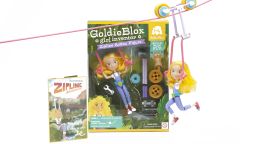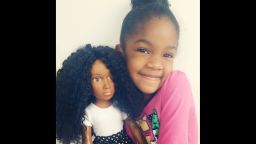Story highlights
Barbie dolls with more diverse skin tones and hair colors will be available
Barbie will also be able to wear flats, not just heels
Other dolls are reflecting more than fashion to children who buy them
Welcome to the real world, Barbie.
Fans of the doll will eventually pick from 23 Barbies with different eye colors, hair colors, skin tones, face shapes and hair styles, according to Mattel.
Though she’s still that stylish, fabulous Barbie we’ve known for decades, the dolls from Mattel’s new Fashionista linebeing rolled out through October are reflecting more of the diversity of women around the world. The 23 different dolls – 17 of which are already on sale – will represent eight skin tones, 14 facial structures, 22 hairstyles, 23 hair colors and 18 eye colors.
More than just a fashion plate
The latest line of diverse Barbies may find fans among a growing number of parents who want dolls to reflect the broad ethnic diversity of women and a wide range of possibilities for girls’ futures. Barbie isn’t the only doll that’s starting to look a little more like the girls who play with them.
GoldieBlox founder Debbie Sterling began her company via Kickstarter in 2012 to “disrupt the pink aisle” with construction toys that would engage girls and get them excited about building. That could inspire girls to study for careers in male-dominated fields such as science, technology, engineering and math.
“We’re thrilled to see the growing diversity among dolls,” Sterling said.

“Goldie is a quirky and confident girl who’s not afraid to fail, and we brought her to life as an action figure with articulated joints and a 13-inch zipline so she can soar across the room,” she added.
“We hope that Goldie and her friends provide a vital way to see all the different things girls can be, and are inspiring examples for girls and boys alike.”
Dolls that reflect African-American girls
Worried about her daughters expressing dislike for their own facial features, skin tone and hair, African-American mom Angelica Sweeting launched Naturally Perfect Dolls to help young girls of color see themselves in their toys.
“Seeing my daughter struggle with her beauty at the age of 3 was completely terrifying for me,” Sweeting said. “I could not fully understand how a child so young could be aware of her outer appearance and even disapprove of it.”
Sweeting says her doll has facial features that reflect women of color.

“Beauty comes in so many colors, and the Angelica Doll was created to help open the eyes of young girls to the complete spectrum of beauty,” she said. And the hair can be styled in various ways.
With her Kickstarter campaign more than fully funded, Sweeting hopes to start offering her doll for the sale in the fall.
‘Upcycled’
Other parents have cleaned up existing dolls and recycled them to look more like children instead of grownups.
Australian mom Sonia Singh removed the makeup and skimpy clothes from hypersexualized Bratz dolls and other dolls to show what child-like dolls look like. Singh calls the “upcycled” dolls “Tree Change Dolls” and can’t keep up with demand.
“These lil fashion dolls have been given a ‘tree change,’ swapping their high-maintenance high-fashion habits for down-to-earth style,” she writes on her site. Singh “repaints the dolls faces, mold new feet or shoes, and my Mum sews and knits their clothing.”
She encourages others to recycle their own dolls.
From heels to flats
For those parents and kids who prefer Barbies, the latest Mattel dolls introduced in January have movable ankles.
That means Barbie can wear flats or heels as the occasion dictates. Until recently, she’s always worn heels, no matter how odd she looks barefoot and regardless of what careers Mattel has allowed her to try over the years in which flats would make more sense.
Heels-hating moms everywhere are probably celebrating.

































